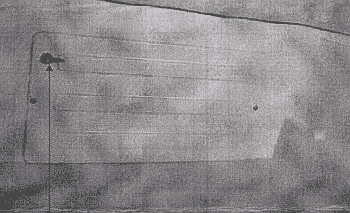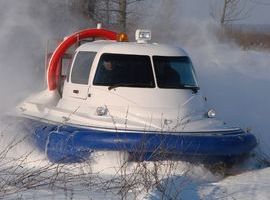Craft systems
Electric equipment system
The electric equipment system is of direct current with rated voltage 12 V. The service system is carried out by the main and additional generator of alternating current and accumulator battery. The main generator P12W250 has permanent magnet excitation. Rated power – 250W, rated voltage – 12 V, max current – 28A. The generator is installed in the engine front part. The additional generator is installed in the undermotor frame behind the engine.
Both generators have remote voltage regulators located on the back wall of the cabin in front of the engine. The engine starts up from the electric starter only. The starter is fed by the accumulator battery of 55A/h capacity which is located in the aft of the left board.
Electric systems related to electricity users include:
- illumination and light signalling
- engine control devices
- heating supply of the cabin
- engine startup
- engine ignition.
The illumination system includes halogen headlights located on the left and right boards of the aft, pilot light and an autonomous emergency stop light mounted in the upper part of the cabin and all-round light lamp installed on the propeller nozzle. The pilot light goes 360° around the hull of the air-cushion craft “Pegas”. There are 2 lamps inside the cabin.
There are safety fuses located in one block under the console to protect the electric network on board. The connection between electricity and consumers is double-wire, with a general negative leg. Electricity is installed with wires of PV3 (wire brand) section depending on current input used by the units. Connectors and terminal blocks are applied for more comfort of units and electrical wiring harnesses montage and dismantling. The 'ground' button is electrical; it is remotely controlled from the console. It is possible to switch on and off the 'ground' button by a strong push on the rudder cover in the upper part of the button when needed. The button is installed in the aft of the left board.
Firestopping means
The main reason of fire starting on small-size ships is fuel inflammation. To prevent the fire and fight against it on the ship there must be a hand-held portable fire extinguisher.
Drainage system
To remove water from the hull there is an electric pump installed in the aft of the bottom. It is also recommended to have some device for removing water on board (a hand pump or a hand ladle).
Climate control
Ventilation and 2 types of heating the saloon are applied for making the craft mechanisms work well and passengers feel comfortable. Input ventilation is carried out by air supply through ventilation lattices. Exhaust ventilation takes place through 2 pairs of lattices located in the upper back side of the cabin. 'Webasto' autonomous heater has a closed cycle of cabin heating. Cold air from inside the cabin is taken by the heater, then it becomes warm and moves back into the cabin.
NB!
After the 'Webasto' heater and the engine are off, do not switch off the 'ground' button (under the console) within 5 minutes in order to blow the heating system 'Webasto'. The main heater is connected to the engine cooling system and works as an ordinary car heater. The control organ is a valve cock in the hatch along the right board inside the cabin.
Emergency means
Upon losing control the air-cushion craft “Pegas” gives a roundabout signal above the top of any outstanding object at daytime, a roundabout white light signal at nighttime.
The ship in urgent need gives the following alarm signals:
- continuous alarm ('sound signal' button on the console) as well as frequent on-going hitting the bell or any metal object;
- frequent flashes of the all-round light;
- alarm rockets (of red colour, 2 pieces; not included in the complete set, so should be bought by the buyer separately);
- hand flare of the red light (not included in the complete set, so should be bought by the buyer separately);
- hands, extended in both sides, go down slowly and end-around;
- radio signal with a SOS message.
Fuel system
The fuel tank is located in the box of the back seat, its filler neck – in the aft along the right board of the deck. “Pegas” can be equipped with an additional and reserve fuel tanks. Fuel supply out of the fuel tanks is controlled with the valve cock installed behind the back of the back seat. A ventilation tube is meant for connecting the tank with atmosphere through a hole in the deck. A fuel flow sensor that has an inbuilt fuel intake and a leak-off tube is installed in the tank.

Photo 2.
NB! Fuel system is so constructed that surplus fuel from the engine of the main or additional fuel tanks goes back along the leak-off tube from the splitter into the main fuel tank. So after fuel out of the additional tank has been in use for about an hour, it goes to the main tank. Thus, the valve cock of the fuel tanks switch should take 'main fuel tank' position
Rescue means
Rescue means are applied for rescuing people during ship accidents on water.
The rescue means kit must include:
- rescuing rope (of yellow colour)
- first-aid kit
- personal rescue means (life jackets).
Personal rescue means must be of the orange colour and their number must match that of the people on board.
Control system
The air-cushion craft “Pegas” is controlled ahead with 4 vertical rudders located behind the ventilator; along the fore-and-aft trim with 2 horizontal rudders located behind the vertical ones. Up and down the rudders are fixed to the hinging bearings, the propeller nozzle and the hull.



